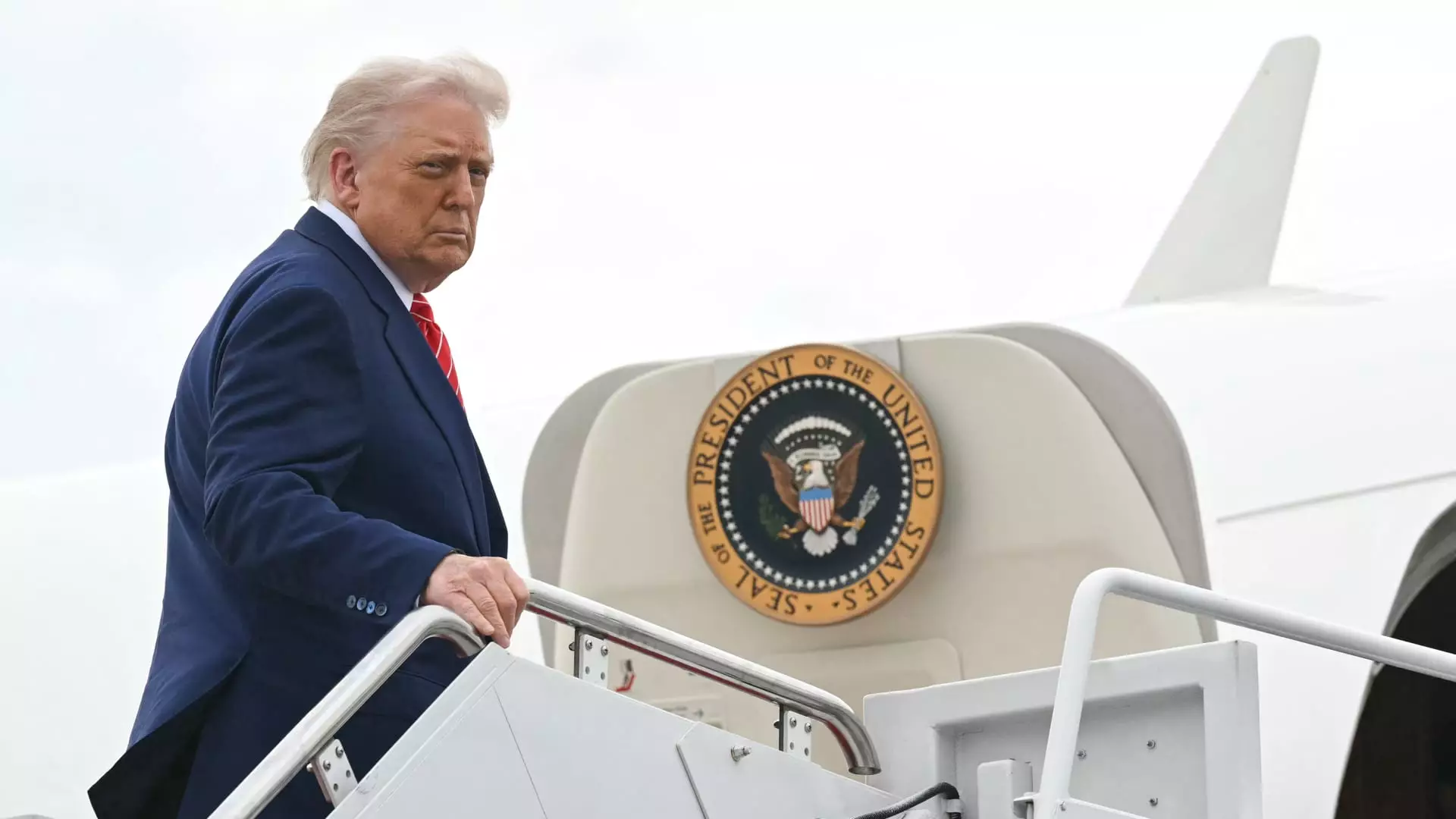The ongoing saga of President Trump’s tariffs crystallizes a significant issue—how so-called economic strategies can evolve into political battlegrounds. Recent developments reveal the fraught state of Trump’s tariff policies, which are embroiled in legal jeopardy. Despite a federal appeals court’s ruling against him, Trump’s advisers remain resolute. Commerce Secretary Howard Lutnick’s claim that “tariffs are not going away” speaks volumes about the administration’s obstinate posture in the face of an increasingly complex legal environment. The situation transforms tariffs into both a tool of economic policy and a shield for political maneuvering, effectively highlighting the administration’s desperate grip on its controversial agenda.
This insistence on maintaining tariffs underscores a broader pattern in Trump’s strategy. Instead of revisiting the original rationale behind these economic policies—fundamentally aimed at addressing trade deficits—Trump’s team appears to have doubled down, revealing a dangerous unwillingness to adapt to judicial scrutiny. The looming possibility of these tariffs being debated in the U.S. Supreme Court raises eyebrows, with many questioning whether a conservative majority might simply turn a blind eye to legal intricacies in favor of political alignment. The administration’s self-assuredness is unsettling, considering the significant implications for American workers and international alliances.
The Echoes of Economic Consequences
Trump’s position that tariffs are essential to safeguard American interests raises critical questions about their actual impact. While framed as a tactical move to bolster the U.S. economy against what the administration labels “anti-American tariffs” from abroad, the real-world effects may well defy such simplistic narratives. Imposing tariffs can lead to a tit-for-tat scenario, where other nations respond with their own economic measures. The collateral damage often lands squarely on American consumers, resulting in higher prices and a misunderstanding of international economic dynamics.
Hassett’s overwhelming confidence in the judicial backing of these tariffs is equally alarming. It suggests a disconnect between the administration’s ideological posturing and the pragmatic realities most citizens face. To believe that courts will ultimately support Trump’s economic vision disregards the nuanced dynamics of trade, which are often cyclical and deeply entrenched in globalization. Echoes of a national emergency, as invoked by Trump to justify these tariffs, underscore a dangerously elevated rhetoric that positions economic adversaries as existential threats.
The recent rulings from the U.S. Court of International Trade reinforced that a president cannot arbitrarily impose tariffs under the guise of emergency powers. Trump’s insistence otherwise showcases a troubling trend where legal frameworks and economic realities are obscured by political expedience. The argument that such judicial outcomes could “undermine his negotiating leverage” eerily reflects a willingness to prioritize short-term political gains at the expense of long-term economic stability.
A Future Shaped by Uncertainty
The ramifications of Trump’s tariff policies extend beyond their mere existence in legal limbo. As Lutnick pointed out, these legal challenges threaten to reverberate throughout the economy, affecting various sectors and tacitly shaping the U.S.’s standing on the global stage. Economic instruments meant for strategic effect could be irrevocably altered, influencing future administrations’ ability to navigate international trade disputes.
The threat of “economic ruination,” as articulated by Trump, radiates both fear and defiance. However, this alarmist rhetoric diverges from the grounded realities that speak to the complexities of global trade. Disentangling economic relations proves increasingly difficult in a world interconnected by mutual dependency. The naive premise that the U.S. can reset trade relations unilaterally belies a dire misunderstanding of how economic relationships function.
Thus, while the administration clings to tariffs as a remedy for perceived injustices, the broader implications of these policies raise critical red flags. Is this a fight to revitalize American manufacturing and restore jobs, or a perilous political game with potential consequences that may linger long after Trump leaves office? The rhetoric sounds bold, but beneath it lies an uncharted territory flooded with uncertainty, ambiguity, and the possible erosion of the very economic foundations the administration aimed to protect.


Leave a Reply